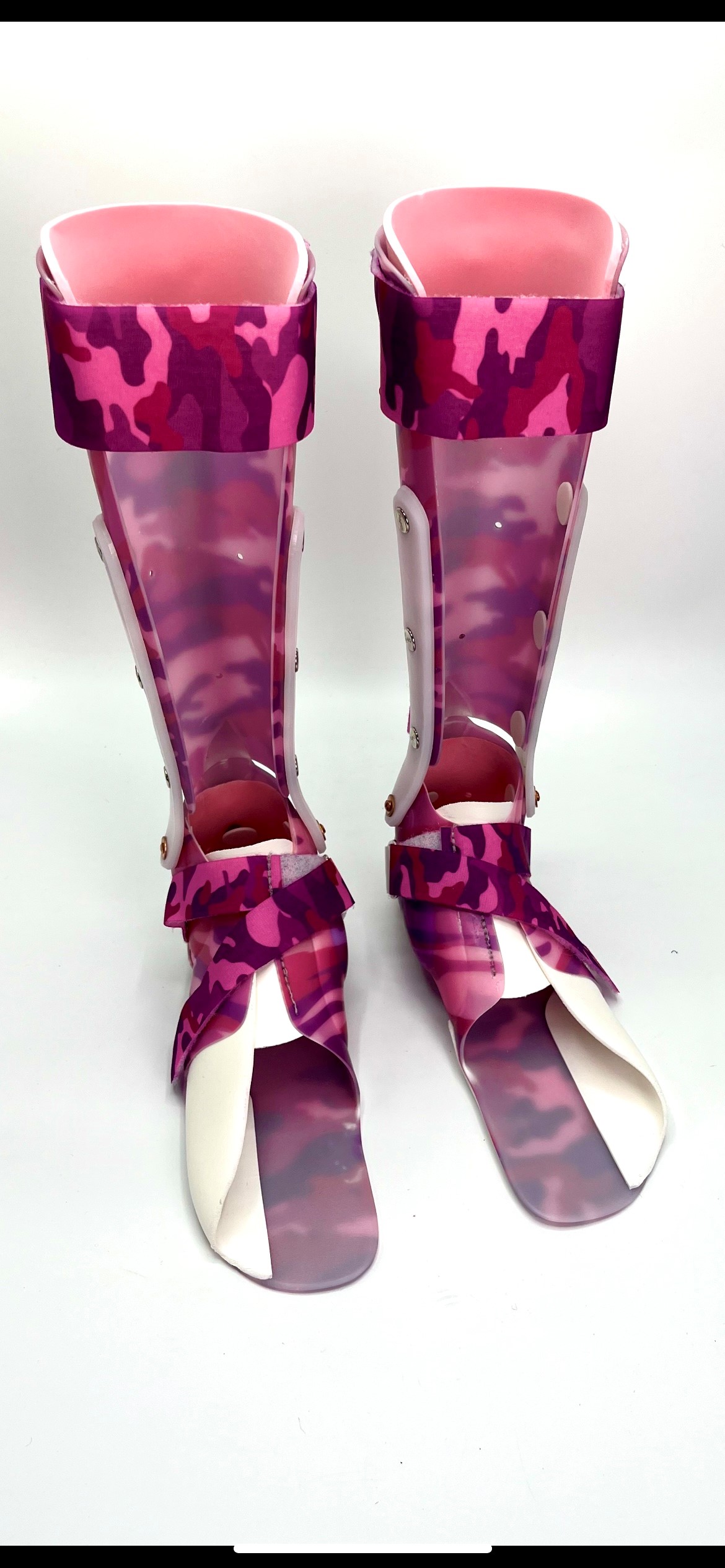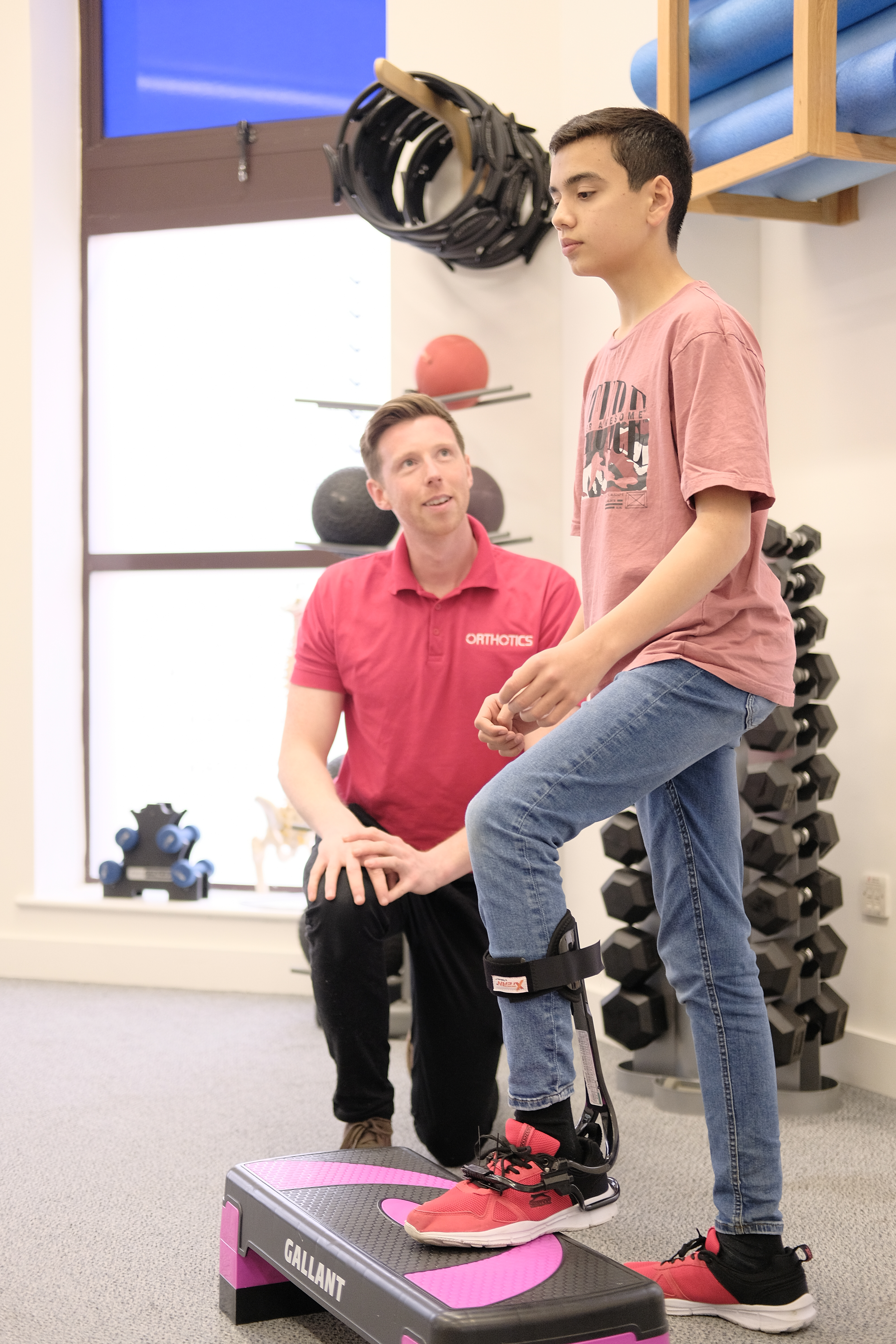Get in touch!
We don't provide our services to anyone else, and we are always available to help when you need us. To contact us, please fill out the following form.
AFOs (Ankle-Foot Orthoses) for children are specialised medical devices designed to provide support, stability, and correction for children with conditions that affect their mobility. These devices help to improve the way a child walks and moves, and they are often recommended as part of a comprehensive treatment plan for children with specific physical challenges.
AFOs for children are custom-made or off-the-shelf devices that support the lower leg, ankle, and foot. It helps improve the alignment and function of the foot and ankle, assisting in walking, standing, and other activities. The purpose of an AFO is to provide stability, prevent deformities, and improve movement for individuals who experience issues with their lower limbs, whether due to neurological, musculoskeletal, or developmental conditions. AFOs are designed to be worn on the outside of the foot and leg and are typically made from lightweight materials such as plastic or carbon fibre, depending on the specific needs of the child.
AFOs for children are used to treat a wide variety of conditions that affect a child's ability to walk or maintain balance. Some of the most common conditions include:
An AFO can be recommended based on a range of factors. The primary indications for a child to use an AFO include:
The use of an AFO provides numerous benefits for children who need additional support. Some of the key benefits include:
There are various types of AFOs, each created to meet specific requirements. The most common types include:
A solid AFO, also known as an ankle-blocking AFO, is a solid device that controls the ankle in all four of its available planes of movement (Medially/Laterally and Plantar/dorsiflexion - in plain english; side to side, and up and down).





Fitting an AFO for a child is a detailed process that begins with a thorough assessment by an orthotic specialist. The orthotist will take precise measurements and may make a mould of the child’s foot and leg to ensure the AFO is custom-fitted for maximum comfort and functionality.
Once the AFO is made, the child will wear it in a trial fitting to ensure that it provides the necessary support and alignment. The orthotist may adjust the device during this time to fine-tune its fit and performance. Over time, as your child grows, the AFO may need to be adjusted or replaced to accommodate changes in size, shape, or condition. Regular follow-up appointments are typically scheduled to ensure the AFO continues to meet the child’s needs.
Here are some common questions parents may have about children’s AFOs:
The amount of time a child should wear an AFO depends on their specific needs and the advice of their orthotist. In many cases, children wear their AFOs during waking hours, particularly when they are walking or standing. Some children may need to wear them all day, while others may only need to wear them during certain activities, such as physical therapy or school, there are also night splints to be worn to bed.
Caring for an AFO is relatively straightforward. Most AFOs can be cleaned using mild soap and warm water. It's important to dry them thoroughly to prevent damage. Some AFOs may also require occasional adjustments, so regular check-ups with an orthotist are advised.
It’s not uncommon for children to resist wearing their AFOs at first. Gradually increasing the time they wear the device and making the experience positive can help. You can also work with a therapist to help your child get accustomed to the AFO. Involving your child in the process and explaining the benefits can encourage cooperation.
The time it takes to see improvements varies depending on the child’s condition, the type of AFO, and the level of support provided. Some children experience improvements quickly, while others may need several weeks or months of wearing the AFO to notice significant changes.
Yes, AFOs can provide significant relief for children with foot or ankle pain, especially if the pain is related to abnormal foot positioning or muscle weakness. By helping to correct alignment and provide better support, AFOs can reduce strain and discomfort.
Choosing the right footwear for a child who uses an Ankle Foot Orthosis (AFO) depends on the type and design of the brace. Generally, shoes with a wide fit, removable insoles, and an easy-to-open design (such as Velcro straps or zips) are best, as they provide enough space and flexibility to accommodate the AFO. A stable, supportive sole is also important for comfort and safety. Your orthotist can recommend suitable footwear brands and styles based on your child’s specific needs and the AFO they are using.
At Children’s Orthotics, we understand the unique needs of children requiring AFOs. Our orthotists ensure that each AFO is custom-tailored to provide the maximum benefit for your child. By choosing Kids Orthotics, you can expect:
The first step towards getting your child’s treatment underway is to contact us at Children’s orthotics to get booked in for an initial assessment appointment. The best way to do this is to book online here, or to call us on 0330 088 3949 to speak to one of our friendly customer service advisors.
To get in touch or arrange an appointment, you can call us at 0330 088 3949 or email office@orthotics.co.uk.